The advantages of smooth-bore tank guns
Widespread smooth-bore tank guns contributed to several major factors. Such products had a number of advantages over rifled guns related to manufacturing techniques, operation features and combat potential in combination with different types of projectiles. Due to these factors - despite the lag in some characteristics - smooth-bore guns were able to almost completely oust their rifled rivals.
Technologies and materials
The manufacture of tank guns with sufficient characteristics in itself is not an easy task. The main difficulties associated with the production of the trunk. This unit must have high strength, corresponding to the pressure of the powder gases, to be tough to obtain the required accuracy, and not to differ in excessive mass, meeting the requirements of the host machine.
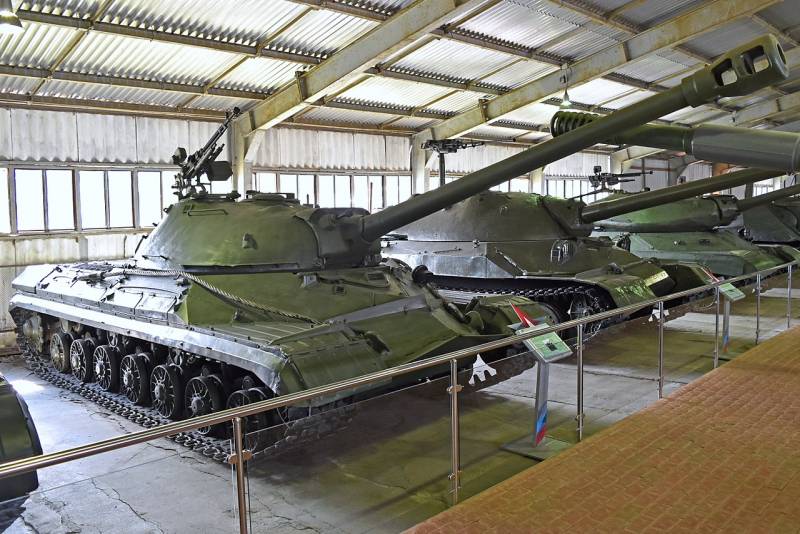
T-10 - the last domestic heavy tank and one of the last Soviet tanks with a rifled gun. Photo of Wikimedia Commons
A significant contribution to the complexity of the manufacture of the gun barrel makes the process of manufacturing rifling. Regardless of the specific technology, the production of rifling noticeably affects the complexity, duration and cost of production of the trunk. Also, there is a need to find the optimal combination of material and technology that can ensure the production of barrels with an acceptable cost.
In addition, the presence of rifling affects the strength characteristics of the trunk and a number of its other characteristics. In fact, this barrel is a pipe, weakened by the presence of internal rifling. Thus, the specified strength must be ensured by the appropriate thickness of the wall of the trunk: from the rifling to the outer surface. This may lead to the need for thicker walls or composite structures.
In terms of barrel design, a smooth-bore weapon is simpler. The production task is to manufacture a simpler trunk with no internal relief. As a result, labor-intensiveness and complexity of production is reduced, and it also becomes possible to reduce metal consumption. However, practice has long shown that the need to increase the basic characteristics can lead to a new complication of the structure and its production.
Energy issue
One of the main parameters of any receiver system, including a tank gun, is the so-called. muzzle energy - the energy transmitted by the powder gases to the projectile. In the case of tank guns, muzzle energy is primarily responsible for the firing range and the penetration rate of the target’s armor. It was established a long time ago that a smooth barrel, both in theory and in practice, allows to obtain higher values of muzzle energy in comparison with rifled. A direct consequence of this advantage is an increase in the resource of the trunk with similar characteristics.
The energy of the projectile and the resource of the barrel is greatly influenced by the interaction of the munition and rifling. The leading belt of the projectile must constantly be in contact with the grooves, their faces and fields between them. As a result, the contact area of the projectile and the barrel increases significantly in comparison with a smooth-bore gun of the same caliber. It is not at all difficult to calculate exactly how the interaction between the weapon and the projectile changes in the presence or absence of rifling.
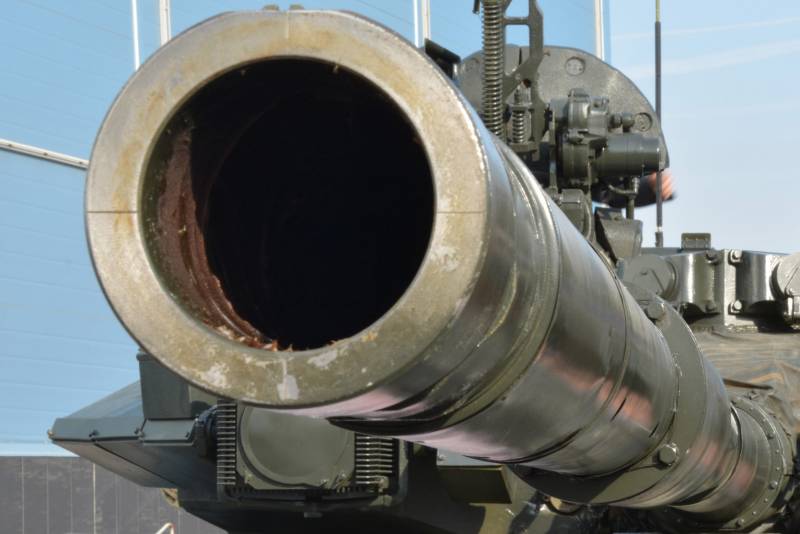
The barrel of the gun-launcher 2А46М-5 tank T-90А; the absence of rifling in the channel is visible. Photo author
For example and ease of calculation, let's take a hypothetical tank gun caliber 100 mm, vaguely reminiscent of some real instruments of domestic production. Let her rifled version has 30 rifling depth 1,5% caliber and the same number of fields of equal width. A simple calculation shows that the perimeter of the cross-section of the bore will reach almost 400 mm. If the “squander” the hypothetical barrel to the bottom of the slit, then with the same caliber 100 mm, the channel section will have only the perimeter 314,15 mm - almost a third less.
In proportion to the geometric parameters of the cross-section of the barrel, the area of contact with the projectile should vary. The friction force directly depends on it, which, moreover, significantly increases in connection with the oblique course of the rifling. Friction, in turn, leads to a gradual grinding down of the barrel bore surface and tool wear. The exact indicators of friction between the rifled barrel and the projectile also depend on the materials of the barrel and girdle, pressure in the channel, acceleration, etc. - for each sample of a tank gun they are their own. On average, the friction force in a rifled barrel may be 40-50 percent. higher than smooth.
Despite the difference in the exact parameters of different products, it is obvious that a smooth-bore gun has certain advantages over a rifled one in terms of the energy of the projectile. It spends less energy on friction and effectively disperses ammunition. With the same indicators of propellant charge, a smooth barrel increases the initial velocity of the projectile, on which the firing range and armor penetration also depend.
Finally, the resource consumption of the trunk is reduced and the service life is not so much reduced. However, this takes place mainly in theory. Modern high-speed armor-piercing shells partially offset this advantage. Customers of tank armament prefer to sacrifice the survivability of the barrel in favor of increasing the effectiveness of projectiles.
Projectile requirements
One of the main prerequisites for the development and implementation of smooth-bore tank and anti-tank guns were special requirements for promising armor-piercing shells. Some types of ammunition required to abandon the traditional method of stabilization due to rifling, while others needed an increase in muzzle energy beyond the capabilities of the rifled barrel.
As early as the Second World War, the prospects for cumulative armor-piercing shells became clear. A special warhead hit the target by exploding an explosive, and its effectiveness did not depend on the velocity of the projectile at the moment it hit the target. In the postwar period, the development of such shells continued, but soon the designers were faced with a specific problem. Existing guns did not allow to increase the parameters of armor penetration of the projectile.
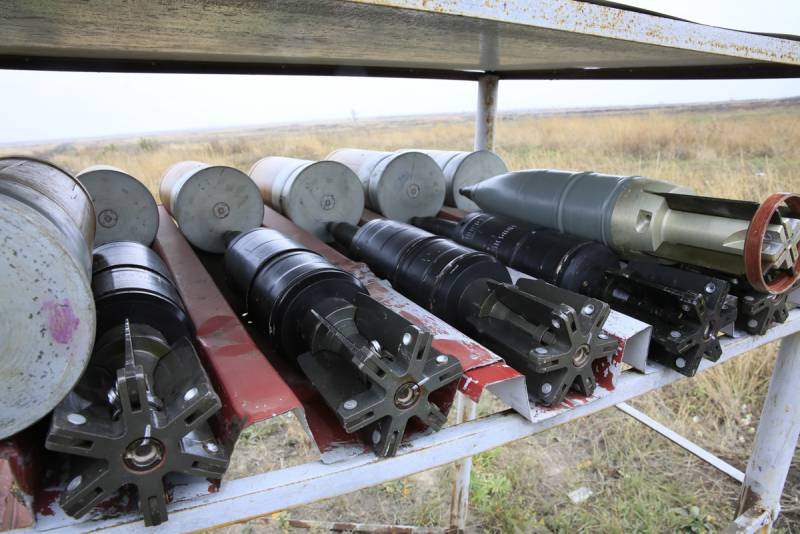
Various shells for Russian 125-mm tank guns. In the foreground are visible stabilizers in flight. Photo of the Ministry of Defense of the Russian Federation / mil.ru
When the projectile rotates, centrifugal force inevitably forms. At the time of the detonation of a cumulative munition, it interferes with the proper formation of a high-speed gas jet. Accordingly, too fast rotating projectile loses part of armor penetration and cannot realize its full potential. It clearly beats up the combat qualities of the tank, and besides, it worsens the economic performance of the weapon and its use.
The first solution to the problem of centrifugal force became special aerodynamic devices designed to slow the rotation of the projectile by the time it hits the target. In the future, the use of a smooth-bore gun was the generally accepted solution. Such an instrument does not cause the projectile to rotate, and its stabilization can be provided solely by its own aerodynamic components.
The growth of armor thickness, and then the emergence of combined armor obstacles, placed special demands on sub-caliber projectiles. Over time, it became obvious that promising munitions of this kind would be able to show higher performance when working with smooth-bore guns, while the value of rifled in this context was sharply reduced. All this was due primarily to the requirements for increasing the muzzle energy.
To effectively defeat a protected target, a sub-caliber armor-piercing projectile must have a high speed. For example, a modern domestic projectile 3BM46 "Lead" with a mass of 4,85 kg is accelerated by a 2A46 gun to a speed of about 1700 m / s. Due to this, at a distance of 2 km with a direct hit on the target, an average penetration of 650 mm of homogeneous armor is provided. It is easy to calculate the energy performance of such a projectile and imagine what losses the use of a rifled barrel would lead to and how much lower its characteristics would be in this case. In addition, one can try to evaluate the effect of such ammunition on a rifled barrel, and with it the wear of the latter.
A smooth-bore gun does not exclude the friction loss of the projectile on the barrel bore, but brings them to the minimum values. Due to this, it becomes possible to transfer the projectile of the maximum possible energy, increasing its combat performance. Due to this, “Lead” receives more than 7 MJ energy in the barrel and is able to show the declared combat characteristics.

Subcaliber armor-piercing projectile 3BM46 "Lead" with a master. Photo Fofanov.armor.kiev.ua
Back in the mid-seventies, the ammunition of a number of domestic tanks included guided missiles launched through the barrel of the main 2А46 gun. Guided missile / active-projectile appeared too late to affect key aspects of the development of Soviet tank guns. However, the presence of a smooth barrel to some extent facilitated the development of guided missile weapons for the new modification of the existing gun.
Passing through a smooth-bore cannon-launcher, the guided missile retains its original position and does not rotate along the roll at high speed. This circumstance at times simplifies the creation of autopilot and other control systems. In addition, requirements are also being reduced for the on-board instruments of the tank, which are responsible for the use of rocket weapons. For the first time in domestic practice, all these opportunities were used to create a 9K112 “Cobra” guided weapon system (CGS) with the 9М112 rocket, put into service in the 1976 year. Subsequently, a number of new missiles for tanks were created.
Separately, we should recall the 9K116 “Fasteners” complex, which included the 3UPK10 100 mm unitary shot for the smooth-bore MT-12 “Rapier” anti-tank guns. Instead of a shell, the 9М117 rocket was placed in the sleeve. Later, a modification of the KUV “Kastyte” for 115-mm smooth-bore tank guns was created.
However, it should be noted that a rifled barrel is not a principal obstacle to the creation of a CCA intended for a tank or other armored combat vehicle. Thus, in a number of domestic armored vehicles projects, a rifled 2A70 launcher of 100 mm caliber is used. It is compatible with the later modifications of the Castets projectiles, and can also use some other guided munitions. The presence of rifles did not prevent the creation of effective weapons with an expanded range of ammunition.
Main disadvantage
Naturally, smooth-bore guns are not without flaws, and according to some characteristics they are inferior to rifled ones. In this regard, the smooth barrel has not yet been able to completely oust the rifled from the scope of tank guns. However, there are methods by which such a gap is reduced, and as a result, smooth-bore guns turn out to be more effective weapons than rifled guns.
First of all, the lack of smooth-bore systems is considered to be less high precision fire. Stabilization of the projectile rotation, provided with a rifled barrel, is more effective than the rotation due to aerodynamic stabilizers. Until a certain time, this factor was of particular importance and had a serious impact on the development of armored vehicles and its weapons in different countries.
For example, in recent decades, British tank builders used only rifled guns. For many years, the 105-mm L7 rifled cannon was one of the most common tank guns in the world. The latest British development of this kind is the LNNXX caliber gun 30 mm, used on Challenger 120 tanks. It should be noted that accuracy was not the only factor that influenced the choice of weapons for British tanks. Since the fifties, the armies of the British Army have been composed of armor-piercing fragmentation shells with a crushable head part (HESH). The effectiveness of such ammunition depends more on the accuracy of the gun than on the centrifugal force generated during rotation.
To date, the problem of accuracy of smooth-bore guns has ceased to influence the combat effectiveness of tanks. Modern armored vehicles are equipped with advanced digital fire control systems that can handle a lot of different information. They take into account the parameters of the target, weather conditions, the state of the projectile, and even the wear of the gun, thanks to which they are able to produce data for accurate shooting. As a consequence, the accuracy parameters of the fire of modern main battle tanks are no longer dependent on the presence or absence of rifling in the bore of the gun.
Weapon evolution
Until the sixties of the last century, tanks were equipped exclusively with rifled guns, capable of showing the required characteristics. The further development of armored vehicles and their weapons over time led to the emergence and wide distribution of smooth-bore systems. In just a few decades, they have become a real standard in their field and will be able to maintain such status in the future.
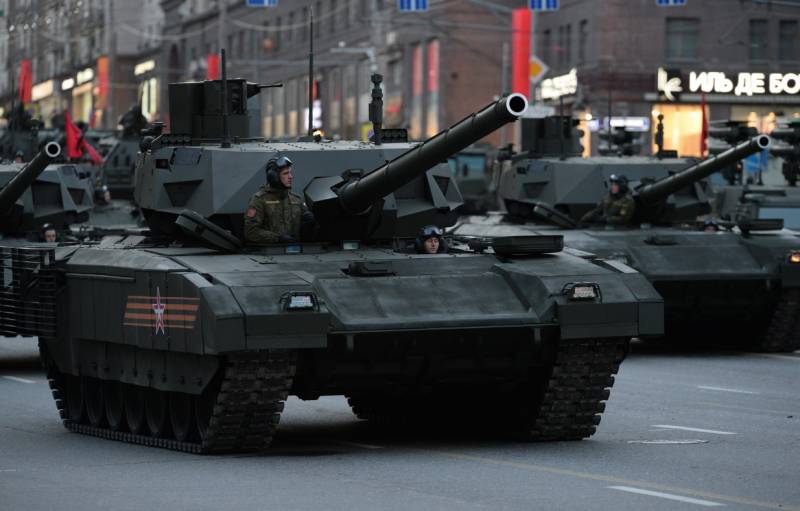
The main battle tank T-14 "Armata", armed with the latest smooth-bore 125-mm gun-launcher 2-82. Photo NPK "Uralvagonzavod" / uvz.ru
The reason for the success of smooth-bore armaments in the field of tanks was the presence of a number of characteristic features that make it possible to simplify and cheapen production to a certain extent while simultaneously building up all the main characteristics. A similar development of threaded systems was overly complex or impossible, and the smooth trunks were left without a real competitor, soon taking their present place.
The development of tank weapons continues and provides for various ways to improve all the main characteristics. The increase in caliber, the creation of new projectiles and advanced fire control systems are being studied. In this case, the basis of all new projects are already known ideas and concepts. First of all, the development of smooth-bore direction continues. Thus, there is every reason to believe that tanks of the distant future - like almost all modern combat armored vehicles - will have exactly smooth-bore guns with enhanced characteristics.
Based on:
http://zavod9.com/
http://otvaga2004.ru/
http://russianarms.ru/
http://armor.kiev.ua/
http://btvt.narod.ru/
http://russianarmor.info/
http://waralbum.ru/
http://gurkhan.blogspot.com/
Solyankin A. G., Pavlov M. V., Pavlov I. V., Zheltov I. G. Domestic armored vehicles. XX century. - M .: Zeihgauz, 2010. - T. 3. 1946 – 1965.
Angelic R.D. Domestic anti-tank complexes: an illustrated guide. M .: AST, 2002.
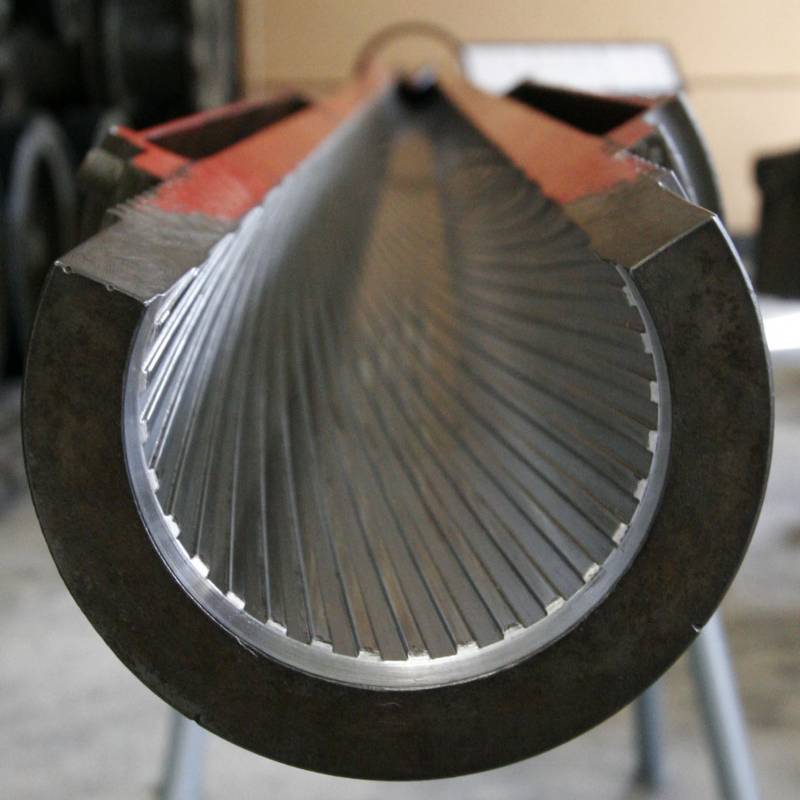
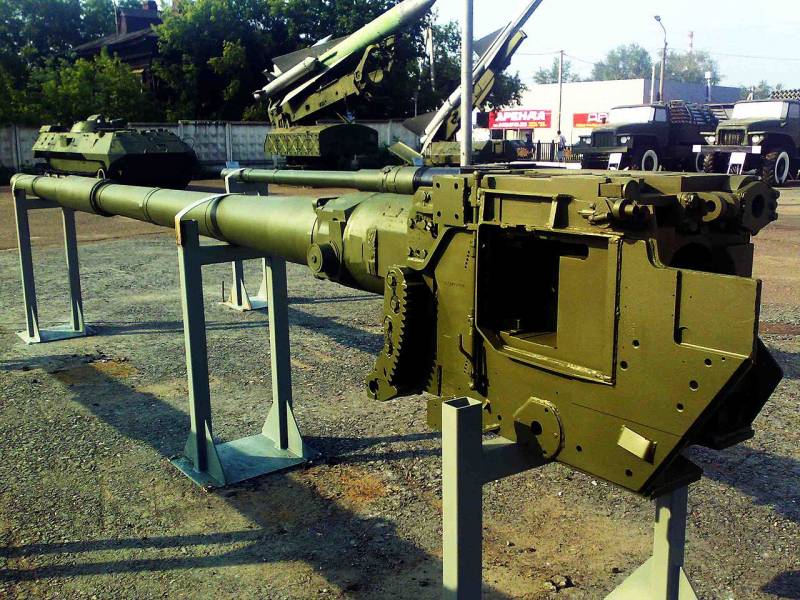
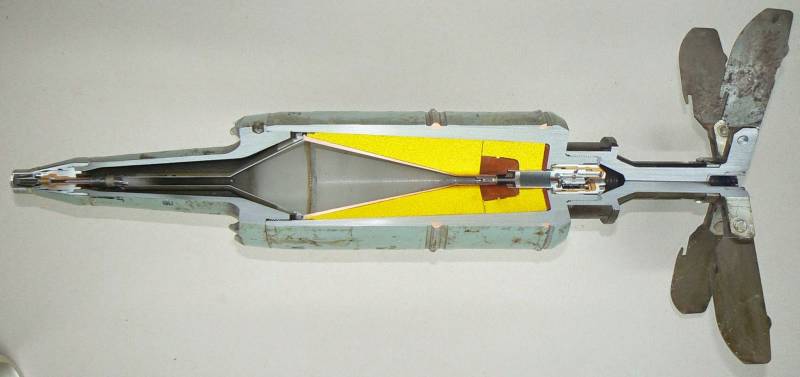
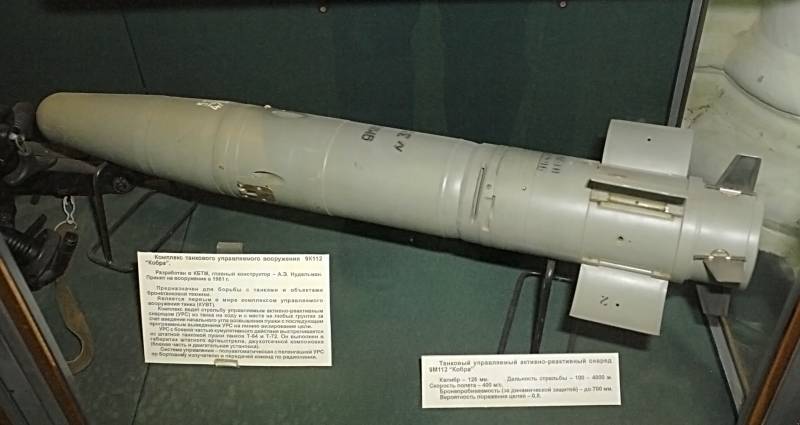
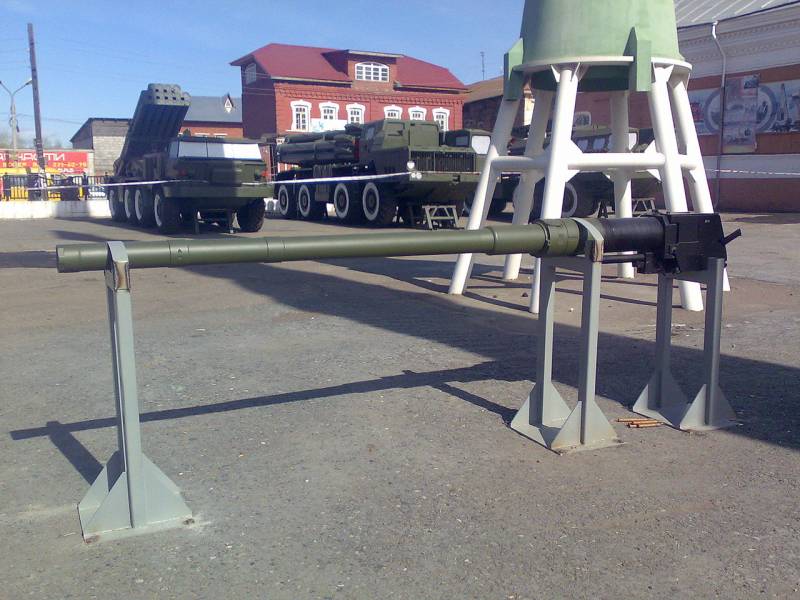
Information